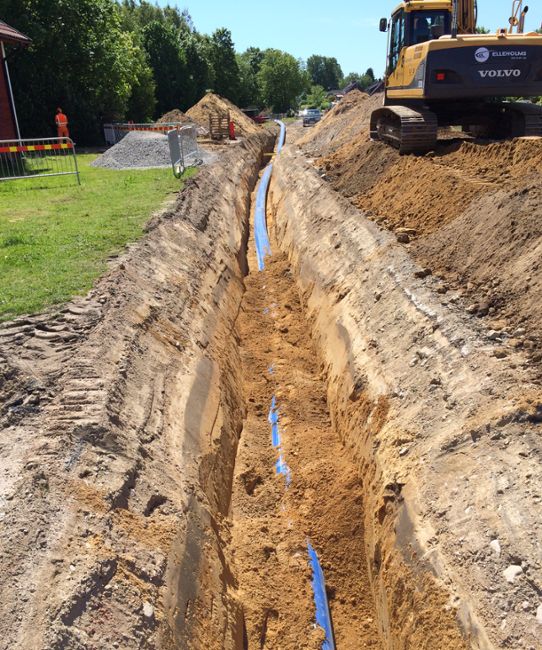There is always uncertainty about how the water supply will look in the future as the climate continues to change. Both the quantity and the quality of water have already begun to change as a result of increased precipitation and higher temperatures. In Bromölla, there have long been problems with the raw water quality of its drinking water. More specifically in the area of Näsum, which would require action on the part of the municipality. On the other side, Olofström Municipality is faced with the problem of finding sufficient purified water to supply the entire municipality as it has also had problems with the quality of its raw water.
In order to solve these problems, the municipalities drew up a joint water supply agreement in 2012. According to this agreement, water pipelines will be constructed between Bromölla and Olofström via Näsum. The water from Bromölla’s groundwater reservoirs can therefore be used to supply Olofström, at the same time as Näsum gains access to better water than previously. The construction project is divided into three stages. The work began in 2014 and is now in its final stage. The estimated completion is May 2016. The project is run by an operating company, Skåne Blekinge Vattentjänst (SBVT), which consists of four municipalities: Bromölla, Olofström, Osby and Östra Göinge.

Joint water supply a solution
As Bromölla Municipality still had to build a new water pipeline to Näsum, it made the assessment that it would be appropriate to extend the pipeline to Olofström and thus be able to share water supplies.
By creating a joint water supply strategy, there would be benefits for both municipalities. For Bromölla, this was not just a beneficial option from the perspective of cost, it would also provide the opportunity to obtain reserve water from Olofström in the event of a water shortage. For Olofström, there was the benefit that large quantities of clean, safe water could be obtained in a simple way from Bromölla. By being frugal with its reservoirs, Olofström can thus also have resources available for reserve water operations.
The joint project encompasses the construction of water pipelines from Bromölla to Olofström’s waterworks via Näsum, new groundwater wells, as well as new waterworks that can produce twice as much water as previously. A new water-rights judgement is required for large-scale extraction of groundwater. Thanks to the joint operating company SBVT, the construction between the two municipalities was simple.
Costs
The cost of building the pipelines, waterworks and groundwater wells is divided between Bromölla and Olofström. The division is determined by each municipality’s actual water use. The total cost of the project is estimated as approximately SEK 100 million. The construction costs within Bromölla Municipality were estimated to cost a total of SEK 74 million of the total cost of the project.
Olofström bears that part of the cost that concerns pumping water to Olofström, while Bromölla bears that which concerns pumping to Näsum.
More examples of climate adaptation
This is one of many examples of climate adaptation. There are more in the collection of ideas being built up by the Swedish National Knowledge Centre for Climate Change Adaptation at the Swedish Meteorological and Hydrological Institute (SMHI). The collection of examples has the aim of sharing experiences and providing ideas to everyone who works with climate adaptation. Examples describe concrete measures and challenges in several subject areas. They show how different actors have worked to adapt their activities to the climate changes that are already being noticed today and those that we cannot prevent in the future.